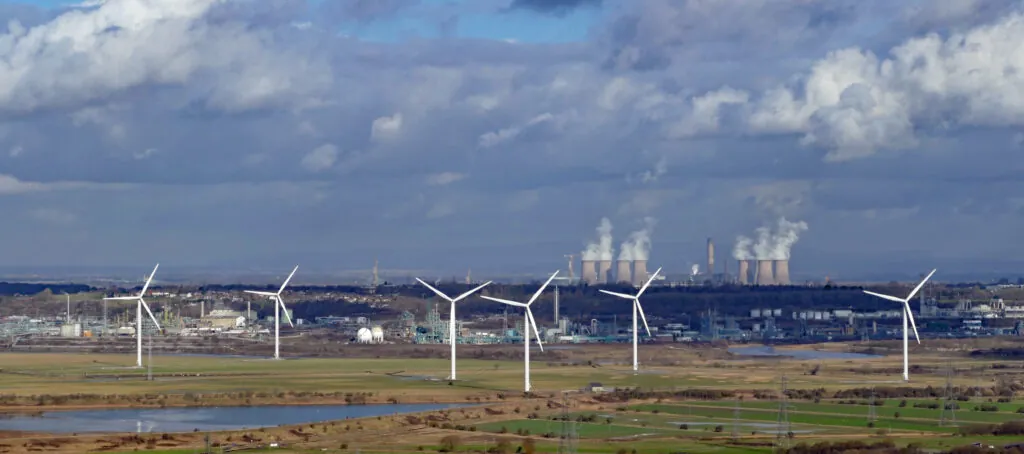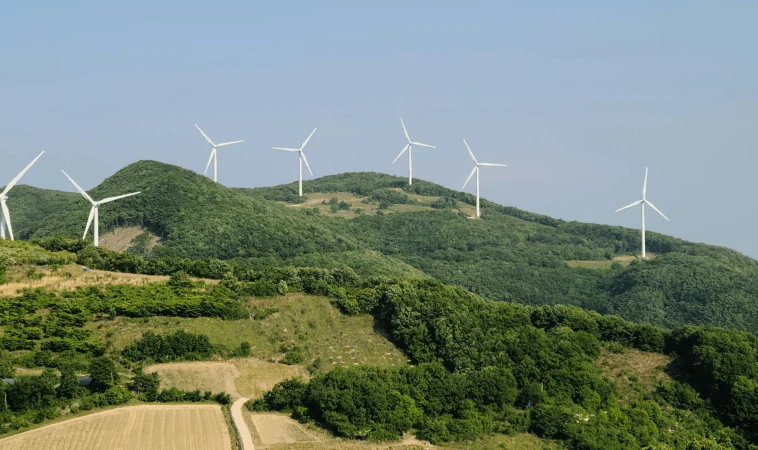
On 30th September, the UK is closing its last coal power plant, proving that, with strong government policies and smart grids, a rapid transition from coal to clean energy is not only possible, but beneficial.
Whilst this move reflects a broader global shift away from coal, the transition must accelerate to keep 1.5°C temperature goal within reach. This is why, through our Solutions Dialogue series, we are encouraging countries to put forward ambitious coal phase-out commitments to support in their upcoming Nationally Determined Contributions (NDCs).
One of the fastest coal phase-outs in the world
At the end of this month, the UK will pass a historic milestone. With the closure of the last coal power plant, Ratcliffe-on-Soar in Nottinghamshire, the British power system will be coal-free – the first time in almost 150 years. It is the end of an era for a fuel that powered the UK’s Industrial Revolution since 1882 and, in the middle of the 20th Century, dominated all sectors of the UK economy, providing over 90% of electricity production.
This achievement means the UK has delivered one of the fastest coal power phase-outs in the world. This is a hugely significant feat considering the UK’s previous reliance on coal. As recently as 2012, coal power accounted for nearly 40% of the UK’s electricity supply. This figure dropped to below 2% in 2019 and has dropped to zero this year. The UK has also managed to achieve this through renewables – replacing coal predominantly with wind and solar power.
The UK’s shift from coal to clean energy has brought many benefits, including a massive drop in power sector emissions. In addition, phasing out coal has helped increase the UK’s energy independence. Last year over half of Britain’s electricity came from zero carbon sources like wind and solar which are domestically produced and not subject to the volatility of global markets.
What can coal dependant countries learn from the UK’s rapid transition?
The UK’s experience shows that government leadership is an essential enabling condition for the transition and that once a policy framework is in place, a coal phase-out can happen faster than anyone would have believed. Key policy steps that facilitated the UK’s rapid exit from coal included:
- Introducing ambitious decarbonisation targets through the world-leading Climate Change Act in 2008.
- Announcing a 2025 coal exit a decade in advance.
- Putting a price on carbon; which made the economics of coal less favourable.
- Strong policy support for wind power.
- Market reforms to encourage renewable energy.
- Investments and innovations in the electricity grid.
The UK has also demonstrated that countries can maintain a reliable energy supply even as they phase out coal rapidly. In the last two decades, the UK’s Electricity System Operator (National Grid ESO, soon to become NESO) has been working to integrate more renewables into the electricity grid as well as introduce new innovative technologies aimed at keeping Britain’s electricity network in balance, increasing its resilience in the process. Last year over half of Britain’s electricity came from zero carbon sources. National Grid ESO is confident in its ability to run the electricity system in 2025 for entirely carbon-free periods – a clear demonstration of the feasibility of moving to 100% clean power.

A sign of the times: the global shift away from coal is accelerating
The UK’s move away from coal is part of a broader trend of coal decline in the power sector of developed countries. In the OECD/EU, 40% of operating coal capacity has already been retired since 2010, and a further 39% is expected to retire by 2030.
In the EU, coal generation has halved from 2016 to 2023 (-327 TWh) due to a similar rise in wind and solar generation (+354 TWh). In 2023 alone, coal generation fell by 26%, making up just 12% of the EU electricity mix. Now, a fifth of the EU’s remaining coal fleet is set to shut down in 2024 and 2025. Several PPCA members in the EU are phasing out coal faster than originally planned:
- In Germany, the poor economics of coal power has meant that the 2027 target for reduced capacity had already been reached.
- Greece has pushed its coal exit target date forward from 2028 to 2026.
- Slovenia is expected to close its coal power plants within the next three years instead of 2033 as originally planned.
There are promising signs around the world too. Countries are accelerating the deployment of renewable energy worldwide as it outcompetes coal on cost basis in most markets. And, over the past 10 years, new coal power proposals have declined by more than 60%. Nearly all of coal-power capacity under development (98%) is now concentrated in just 15 countries, with China and India alone accounting for 86%.
We have the momentum – more and more countries and businesses around the world are recognising the benefits of moving away from coal for the climate, economy and society. But the transition is not yet fast or broad enough to keep 1.5°C in reach.
Phasing out coal power is crucial to delivering on our shared commitment to transition away from fossil fuels agreed at COP28 as part of the Global Stocktake. Countries have ample opportunity to raise ambition and accelerate 1.5°C, aligned action on coal phase-out as they develop their new Nationally Determined Contributions (NDCs) due in 2025, and domestic energy plans.
Going international: alongside Canada, the UK uses it experience to push for a coal-free future globally
In 2017, the UK created the Powering Past Coal Alliance with Canada to turn their domestic commitments into a diplomatic push to achieve the phase-out of unabated coal power around the world. The Alliance works with its members and partners to share best practice and unlock international finance to help countries overcome challenges in phasing out coal so that they can confidently make more ambitious pledges, enact the necessary policies, and accelerate implementation.
Underscoring the growing movement to phase out coal, the Powering Past Coal Alliance (PPCA) has expanded to 180 members worldwide, counting almost one-third of the world’s governments and 84% of the OECD and EU governments.
In the coming months, we will supercharge our efforts to secure the ambition we need to see in countries’ domestic energy plans and policies, and strongly encourage countries to reflect this in new Nationally Determined Contributions (NDCs) to be submitted in the lead up to COP30 in Brazil next year. We need immediate commitments by all countries around the world to no new coal, and commitments to phase out by 2030 in advanced economies and by 2040 everywhere else.
This year, the PPCA co-chairs and Bloomberg Philanthropies are convening the PPCA Solutions Dialogues – a global event series through which members and partners are sharing expertise and providing practical solutions that can help countries overcome challenges in their coal phase-out efforts and put forward more ambitious coal phase-out commitments.




